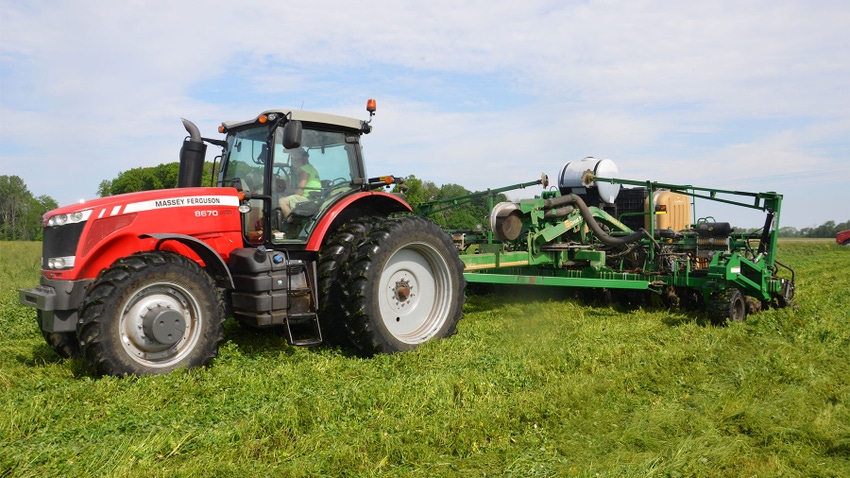January 30, 2024

by Clint Harrison
Cereal rye as a cover crop works exceptionally well prior to soybeans. It can provide additional biomass, which is great for increasing soil organic matter, and can also provide early and even season-long weed control.
However, if more biomass is your goal, cereal rye will need to be allowed to grow later in the season. More growth will increase the carbon level in the plant, allowing for the biomass to last longer throughout the growing season. The more biomass present, the better and longer the weed control for soybeans.
Once you’ve let cereal rye mature, what is the best form of termination? Planting green, which is planting soybeans before cereal rye is terminated, can be an effective option. Planting first helps relieve concerns about a rain happening between termination of the rye and planting.
Once soybeans are planted, cereal rye can be controlled with herbicide. If the cereal rye has reached pollination, it can be controlled with roller-crimping instead. Crimping of cereal rye can get biomass on the ground, which will help with weed control. Soybeans can tolerate crimping up to 4 inches tall, allowing for more time for cereal rye to mature.
Terminating annual ryegrass
Annual ryegrass can be another effective cover crop. Do not confuse it with cereal rye. Annual ryegrass is a cover crop that needs a recipe when planning for spring termination. It is usually not recommended for those new to cover crops. Roller-crimping is not an option with annual ryegrass. Most likely you will need to use herbicide.
Here are a few simple concepts to help termination of annual ryegrass be effective. First, look for three consecutive days with temperatures at 50 degrees F or above and not dropping below 32 degrees at night. A rule of thumb is that annual ryegrass is not ready for termination until you have mown your lawn two times. Plan to spray during the middle of the day — think from 10 a.m. to 2 p.m. This will allow chemical to translocate with daylight before it gets dark.
Make sure your water is an effective carrier for the chemical. Test acidity and hardness of the water. Adjust water conditions so the herbicide can perform at its best.
Annual ryegrass can provide up to 5 feet of roots in one growing season. Any plant with that much root growth wants to live. But if you follow the concepts outlined here, termination will be effective.
Cover crops come in many varieties and can provide many different benefits to your cash crop, depending upon your goals. Cover crops can provide weed suppression, increased organic matter, nutrient recycling and reduced soil erosion. To fully use cover crops to meet your goals, they must be effectively managed, including terminated correctly. It is one of those key management tools.
If you have specific questions about cover crop management, contact your local USDA Service Center.
Harrison is a district conservationist with the Natural Resources Conservation Service.
You May Also Like




